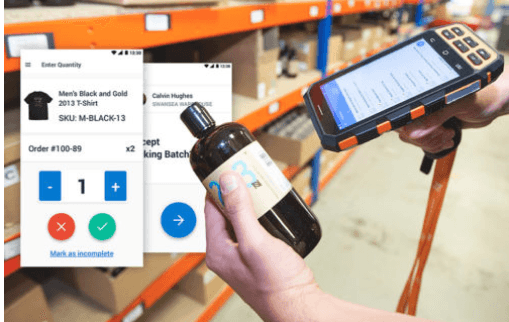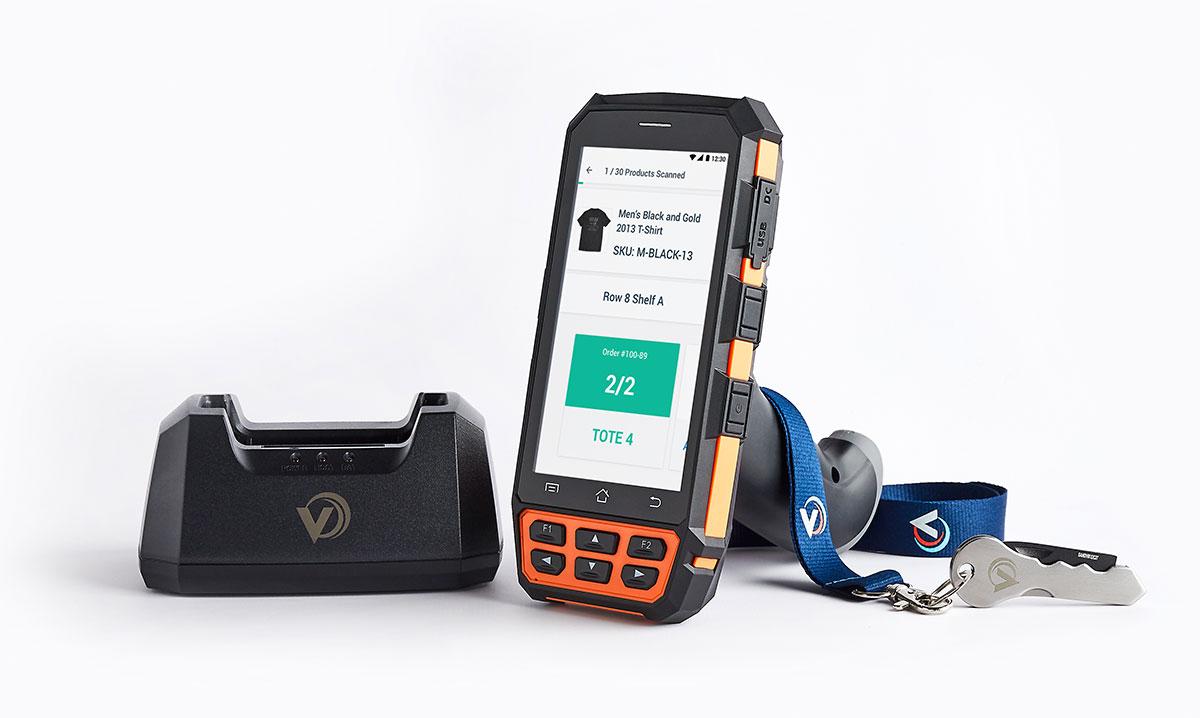Why, And How, You Should Implement A Barcode Inventory System
Almost every ecommerce retailer starts out using a manual stock-picking system. When an order comes in, you go to where the item is usually kept, and pick it. On the face of it, this seems pretty straightforward. However, as your order volume and inventory complexity grow, this method can quickly become impractical, slow, and error-prone. It’s too easy to end up mis-picking and sending the wrong thing to the wrong customer. And we know where that ends; bad reviews, fewer repeat purchases and fewer referrals.
This is when small businesses turn to barcode inventory systems and digital picking. If you are interested in improving your warehouse operations, you may want to learn about Veeqo's warehouse management features.
What is a barcode inventory system?
A barcode inventory system is one where products are assigned individual barcodes. When a product is sold the barcode is scanned, at which point information is sent to a central database.
So, when an item is picked. The warehouse worker scans the barcode when picking a product. The scanner then tells the worker if they have picked the right item. It also records the action in your inventory management system, helping keep an accurate track of stock levels. Helping you keep a real-time track of your inventory and improving picking speed and accuracy.
What information can a barcode contain?
Barcodes can contain a lot of information that can be used by your inventory management system. For example, a barcode can convey information such as a product’s name, weight, dimensions and location within the warehouse. However, for the purpose of efficient picking you would generally not be using the barcode to store such specific information, rather a unique string of digits purely for ensuring the correct item is being picked.
What are the different types of barcode?
1D
These are the types of barcodes that you are probably most familiar with. They are made up of vertical black lines. The scanner then uses the space between the lines to identify which product it is looking at.

2D
These are normally square in shape and have differently shaped shapes that are used to store information. They are used when you need to hold more information than a 1D barcode.
How to set up a barcode inventory system
Creating a barcode inventory system is surprisingly straightforward.
Step 1 - Create a product code
The first thing you need to do is create a product code. These can be based on a 12-digit UPC (Universal Product Code) or SKU number.
While there may be advantages to the former, ecommerce businesses normally start by using SKU numbers.
However, it is likely that if you are not manufacturing the products yourself, the products you purchase will arrive already barcoded.
Step 2 - Create a barcode
The next step is to create a barcode for each one of your product’s codes. You can use barcode software to get this done or an online barcode generator.
Step 3 - Print a barcode
Now, to print out your barcode, you’ll need an inkjet or laser printer, although thermal printers are best for this purpose.
Step 4 - Place the barcode in the relevant place
You then print out the barcode and place it in the relevant bin, shelf or product. Pickers then scan the barcode when they are picking an item.
Ideally, I would suggest placing the barcode on the product itself where possible. This removes the element of human error where someone might put a product in the wrong bin or shelf.
How does a barcode inventory system work?
Barcodes essentially tie the information gathered during picking with your inventory tracking system.
So, when the barcode is scanned it tells the picker they have chosen the right item and tells your inventory management system that the right item has been picked. Reflecting the new figure in your live inventory tracking. So, on one hand, it is making your pickers' lives easier and reducing mispicks. While on the other it is giving you an accurate real-time live inventory count.
Advantages of a barcode inventory system
Fewer mispicks
People get tired and distracted. Especially when they are busy. This is also true of your picking team. If you are relying on your pickers to pick the right item every time they will make mistakes. Mistakes mean mispicks and customers getting the wrong item.
As you can see from the video below, taken from our recent Black Friday webinar, barcoding your products can have a significant impact on high-volume days like Black Friday.
For example, a common scenario faced by businesses is:
A picker mispicks (which wastes time)
A customer gets sent the wrong item (which frustrates them)
A customer service agent then has to deal with the customer and rectify the mistake (so more lost time and either a refund or replacement)
Picker then needs to pick the right item (So more time is being spent on the same order)
The item is then shipped (costing more money)
With a barcode inventory system, the scanner ‘checks’ the right item is picked when it is scanned. So making it easier to pick the right item, no matter how tired they are or how busy it gets. So the above scenario does not need to take place.
For example, TCO, reduced their mispick rate by 91% when they moved to a barcode inventory system.
Makes accurate inventory tracking easier
Being able to know where your inventory is at all times is vital for any ecommerce business. Not only does it reduce overselling and understocking, but it helps provide an accurate audit trail for all of your inventory. If you'd like to know more about inventory tracking, you can read this guide.
Easy to set up
While it can take time to barcode all of your products, actually setting up a barcode inventory system is relatively straightforward. Especially if you are using SKU numbers already.
Cost-effective
While there is normally a cost associated with setting up a barcode inventory system, it is normally smaller than the savings made from fewer mispicks and better overall inventory management.
Periodic inventory counts
Barcode inventory scanners can be used to perform periodic inventory counts. So, when your picking team has downtime they https://www.veeqo.com/ take their scanner and do a quick partial stocktake. Meaning that you have more accurate inventory figures more often.
Learn more about inventory counts.
Hire fewer pickers
As using a barcode inventory system is faster and easier for your picking team, a smaller team can get through more orders than they would using a manual system. Meaning that you can hire fewer people to do the same amount of work. This can be particularly useful during busy periods like Black Friday, as you may be able to handle the increased order volume without hiring temporary workers.
How does barcode scanning work?
Using a scanner

Barcode scanners work along with a very simple ‘point and shoot’ premise: aim and click the scanner at the product’s barcode. The sensor in your barcode scanner detects the code and generates an analogue signal to be decoded. Once decoded, the data is translated into text which appears on the computer software, displaying the required information on a specific product.
The Veeqo scanner

The Veeqo Scanner is the only barcode scanner you need, irrespective of your business size, to accurately, easily and quickly manage high-volume orders when combined with our easy-to-use inventory management system.
The Veeqo scanner is a standalone wireless device with an integrated barcode scanner and works best with Veeqo’s inventory management software. It’s built specifically for use within a warehouse environment, helping you accurately and quickly book-in stock, perform stock-takes and dramatically speed up the picking and packing process:
Reducing operational costs
Speeding up order picking & packing
A greater degree of accuracy in order fulfilment
Completely paperless and wireless picking and packing
Do I need a scanner?
Most companies do use a scanner while doing barcode scanning. However, with Veeqo, you can also use an android phone for scanning.
Should a small business use a barcode scanning system?
Absolutely! The Veeqo barcode scanner combined with Veeqo’s inventory management software is a practical and cost-effective solution for small businesses.
Learn more about how Veeqo can help small businesses with their inventory management.
About the Author
Ben Inman is Manager of the Success Team at Veeqo making sure users get the optimum value from their Veeqo account and achieve their goals.
Ben recently held a webinar where he took delegates through digital picking, using the Veeqo scanner. You can watch that webinar below.






